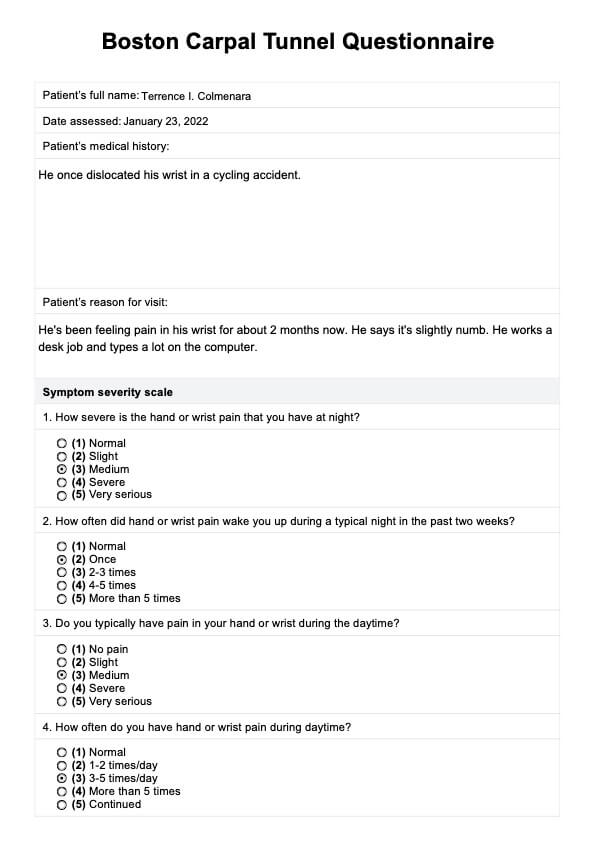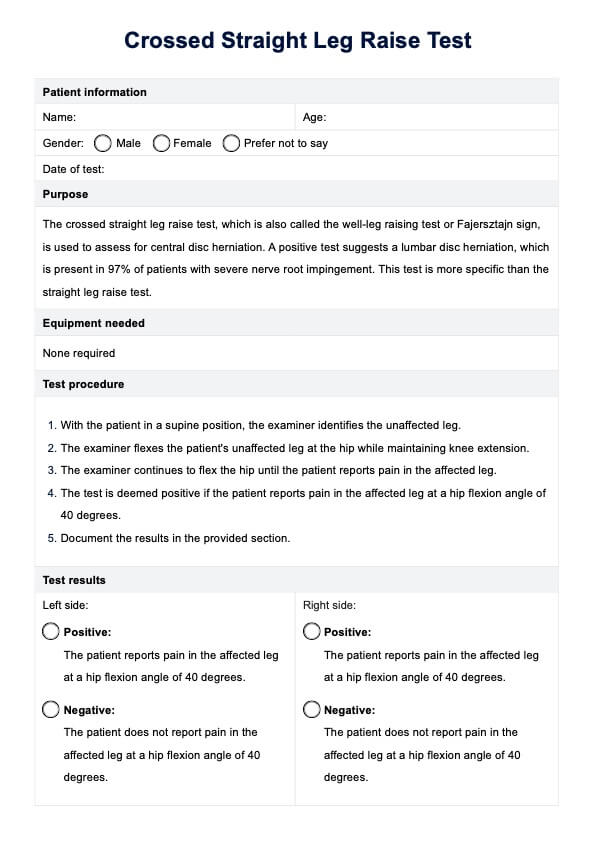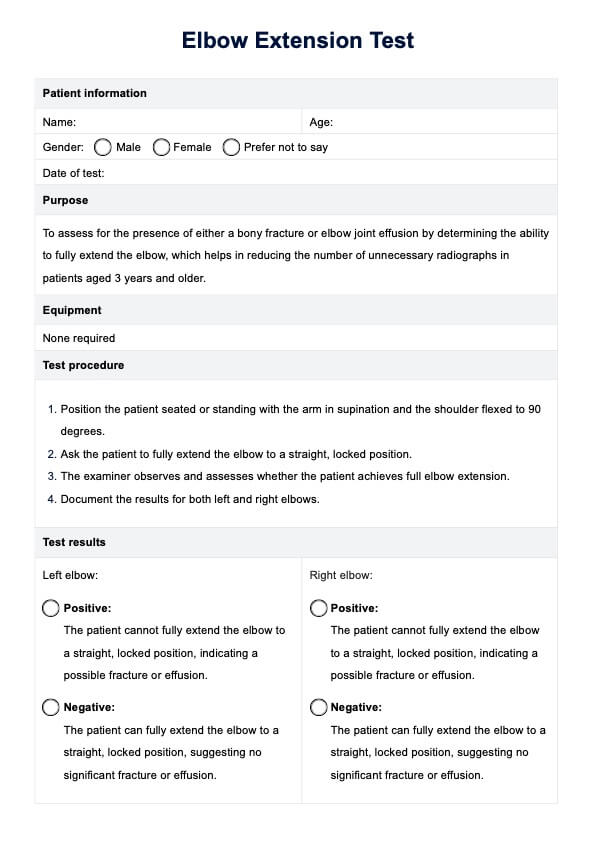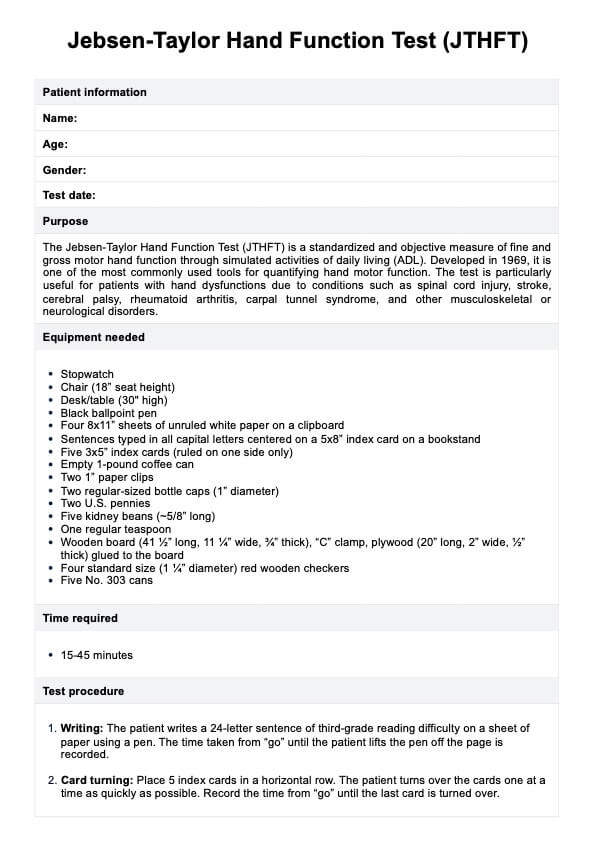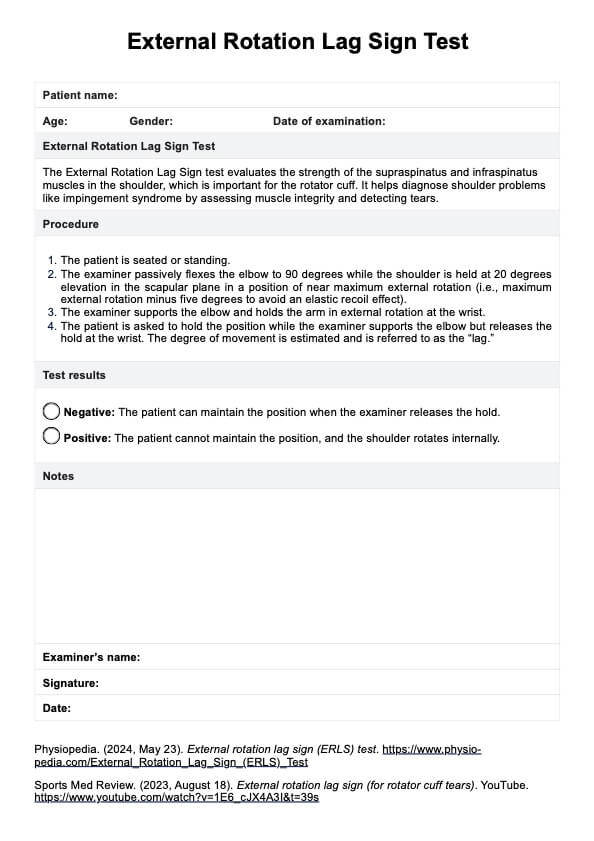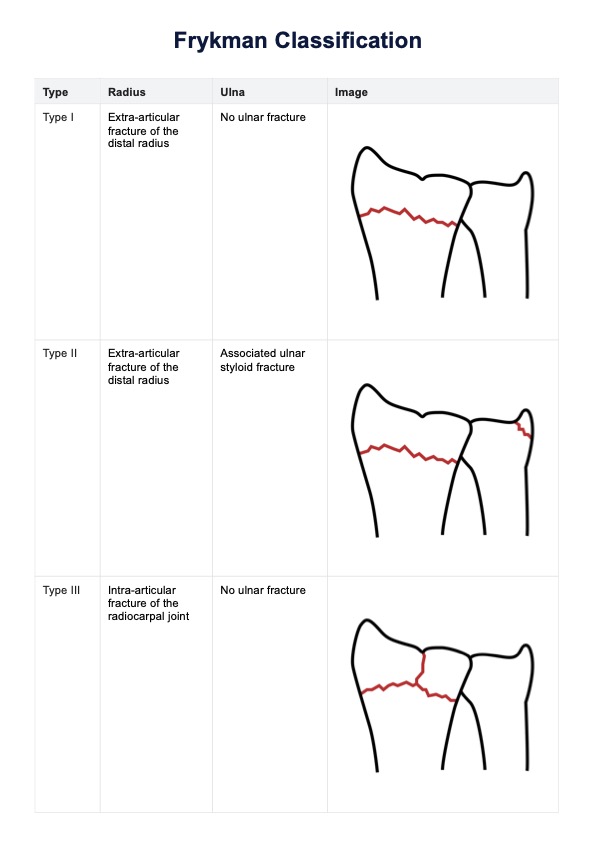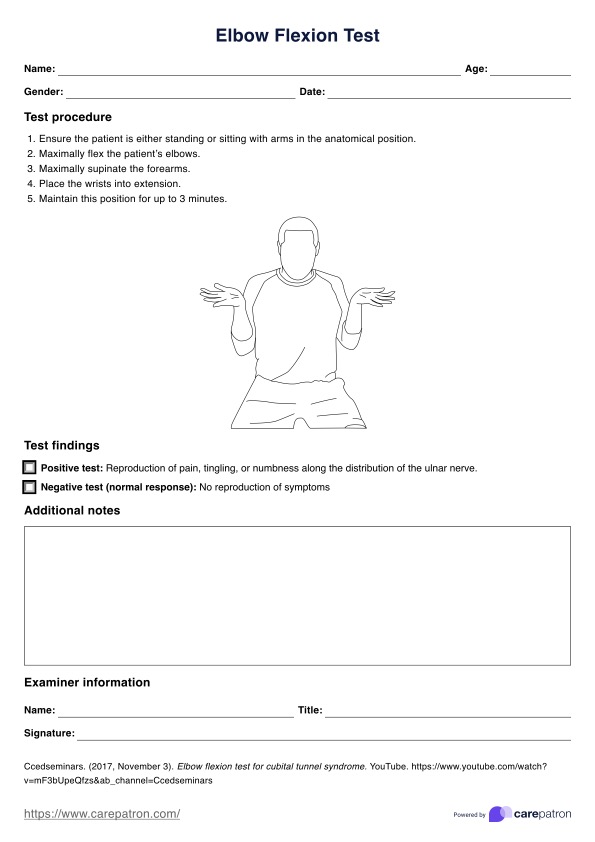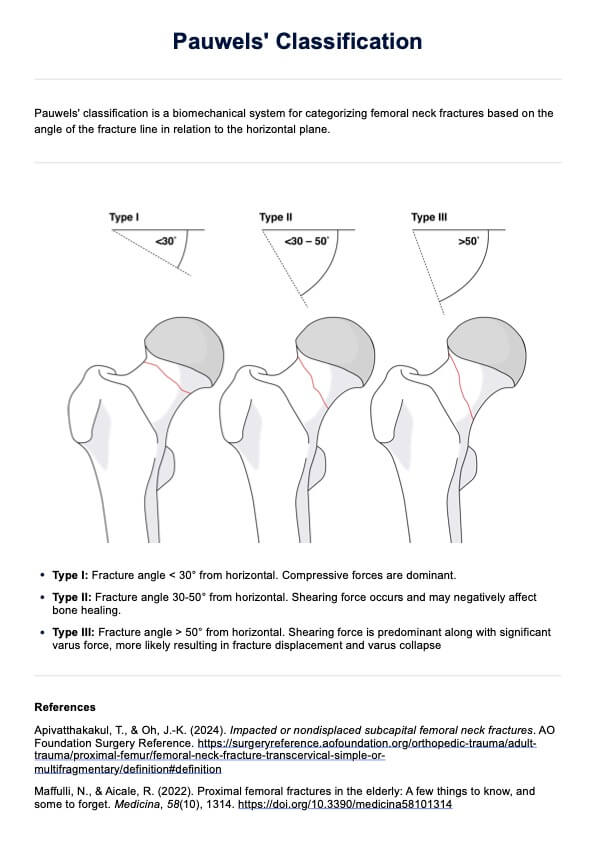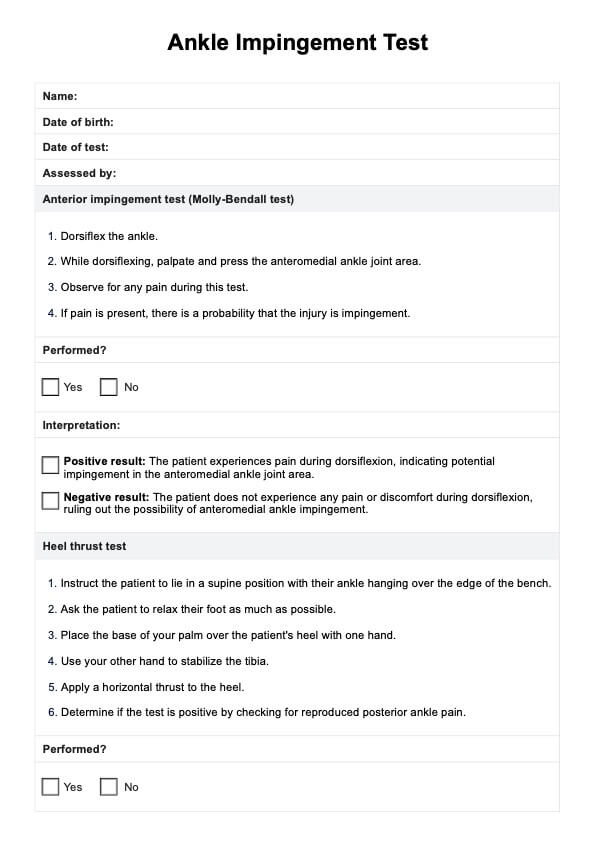Boston Carpal Tunnel Questionnaire
Use the Boston Carpal Tunnel Questionnaire to learn how your patient feels about their carpal tunnel syndrome.


What is carpal tunnel syndrome?
The carpal tunnel is a passage of sorts inside our arms. It's the area within the bones where our ligaments, nerves, and tendons pass through and connect to our hands.
When healthcare professionals speak of carpal tunnel syndrome, they're referring to a condition in which the median nerve of the affected arm becomes compressed, causing excruciating pain in the hand and wrist. The pain might be so great that the person might have difficulty carrying out specific tasks of daily living, work, and even activities for leisure that require the use of their affected hand.
Symptoms of carpal tunnel syndrome
Besides pain in the hand, wrist, and fingers, here are some other symptoms of carpal tunnel syndrome that those who have it will likely experience:
- There might be a tingling sensation from time to time in the affected hand, including the wrist and fingers
- The affected hand, wrist, and fingers might become numb
- It becomes increasingly challenging to maintain grips
Causes of carpal tunnel syndrome
Several things cause carpal tunnel syndrome, but the most common reasons are prolonged wrist flexion, constant wrist movement with little to no rest, and awkward hand positioning. These put so much pressure on the wrist that they cause the tendons to swell and put pressure on the median nerve. An example of an activity that may stress out the hands and wrists is constantly spending a long time typing on a computer or laptop.
Other causes include the following:
- Inheriting genes that cause people to be born with smaller carpal tunnels, which gives less space for the nerves, tendons, and ligaments to breathe
- Hand or wrist sprains, injuries, or fractures from falls, vehicular accidents, sports, etc.
- Arthritis (this causes inflammations that may strain the wrist and hand)
Complications of this syndrome
If carpal tunnel syndrome is left unchecked and untreated for too long, it can cause permanent damage to the median nerve and the affected wrist, hand, and fingers. They might become permanently numb. At best, the person affected will feel permanently numb. At worst, they won't be able to move and use their affected hand.
Boston Carpal Tunnel Questionnaire Template
Boston Carpal Tunnel Questionnaire Example
What is the Boston Carpal Tunnel Questionnaire (BCTQ)?
The Boston Carpal Tunnel Questionnaire (sometimes called the Brigham and Women's Carpal Tunnel Questionnaire or the BCTQ Symptom Severity and Functional Status Scale) is an upper extremity outcome measure with great internal consistency and test-retest reliability. It's designed as a self-administered outcome instrument, meaning patients will give themselves self-ratings, and healthcare professionals will use these self-ratings to determine what else to assess and what their treatment plans would look like.
How is the BCTQ structured and answered?
This self-administered questionnaire is divided into the BCTQ Symptom Severity Scale and the BCTQ Functional Status Scale. You can say that the BCTQ is two outcome measures in one.
The former is a questionnaire with questions like the following:
- How severe is the hand or wrist pain that you have at night?
- How often did hand or wrist pain wake you during a typical night in the past two weeks?
- Do you typically have pain in your hand or wrist during the daytime?
The latter is a list of specific actions and activities that require using the wrist, hand, and fingers. One answers both parts by rating oneself on a scale of 1 to 5.
For the symptom severity scale, what counts as 1 and 5 are different for some items, but they're all arranged by severity, with 1 being normal and 5 being very serious.
For the functional status scale, all answer choices are the same for each item:
- 1 = No difficulty
- 2 = Little difficulty
- 3 = Moderate difficulty
- 4 = Intense difficulty
- 5 = Cannot perform the activity at all due to symptoms
How is it scored, and how are the results interpreted?
You'll calculate the scores for both separately, but they are scored similarly. All you need to do is to get the sum of the scores of each scale and then divide it by the number of items they have. In short, you'll be calculating the mean score for both scales.
For example, the symptom severity scale has 11 items. Let's stipulate that the patient self-rated themself with 5 for all items. Their total score is 55. Divide that by 11, and you get a mean score of 5.
Let's say it's the same for the functional status scale. Their total score is 40. We divide that by 8 and get a mean score of 5.
This means the patient can get a mean score of 1 to 5. The higher the mean score, the worse the symptoms or functional statuses are.
For consistency, we recommend using other physical examination measures for carpal tunnel syndrome that you may have so you can cover as much ground as you can.
How to use our BCTQ template
If you find this patient evaluation measure reliable for your carpal tunnel syndrome-related work, we'd like you to know we created a template for it, and it's easy to use!
The template takes the original questionnaire. We only added sections for indicating a patient's basic information (e.g., full name, date assessed, medical history, reason for visit), radio buttons for the answer choices to tick with a pen or mouse click/screen tap, and a notes box for healthcare professionals such as yourself to discuss your next steps for the patient.
This can be used on patients who haven't been diagnosed with carpal tunnel syndrome yet. It can even be used on patients undergoing surgical interventions for the syndrome, specifically those who are about to undergo surgery.
Benefits of using this assessment
Here are some of the benefits of this tool:
It informs healthcare professionals about how patients feel
The BCTQ is an assessment that allows healthcare professionals to gather patient input. A patient's subjective information concerning their problems can be used alongside other weighted health status measures to cover as much ground as possible. This information can also help professionals develop tailor-fitted treatment plans for the patients. In the case of the BCTQ, the treatment plan will be created while keeping in mind how severe the patient perceives their carpal tunnel syndrome.
It can be used as a monitoring tool
Let's stipulate that a patient has already been diagnosed with carpal tunnel syndrome and a treatment plan is being followed for it. You can schedule a follow-up examinations down the line to check on their recovery or management progress. During these follow-ups, you can reissue this questionnaire again and compare their self-ratings with their initial ratings to see how they're faring.
Commonly asked questions
It can be accomplished within five minutes.
Even if this is a self-reported health measurement scale, that doesn't mean they have to be the ones to tick their answers on the sheet. If it's apparent that they're dominant hand is the affected hand, you can conduct this assessment like an interview and have them tell you their answers while you tick each one for them.
No. It's a screening tool, but it can be used as part of the diagnostic process just in case the patient hasn't been diagnosed with carpal tunnel syndrome.



